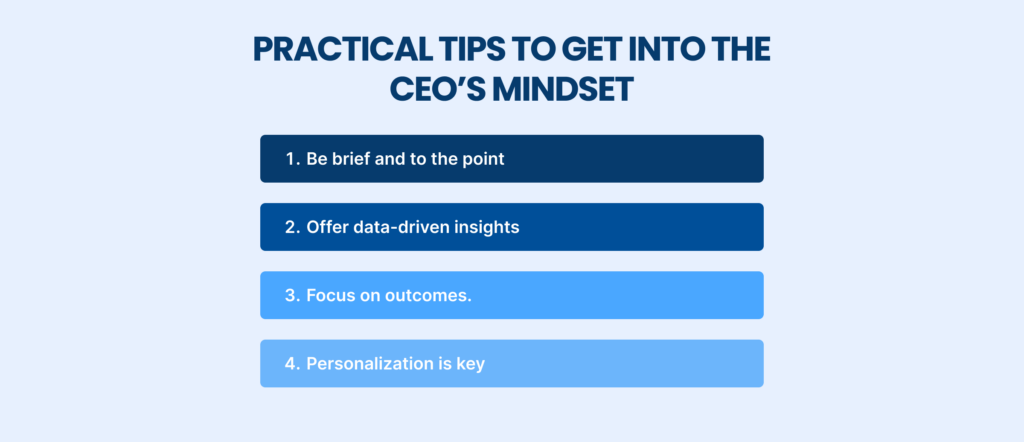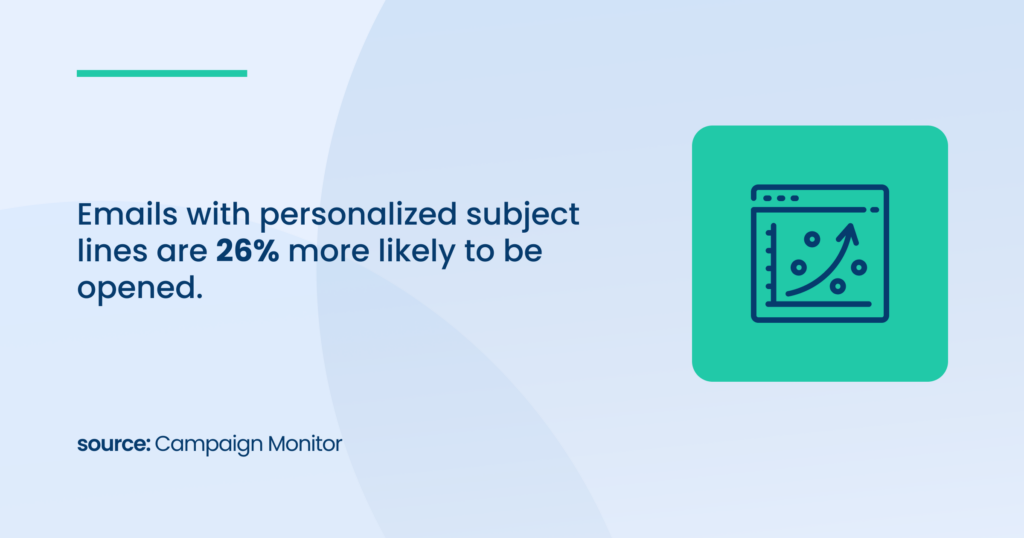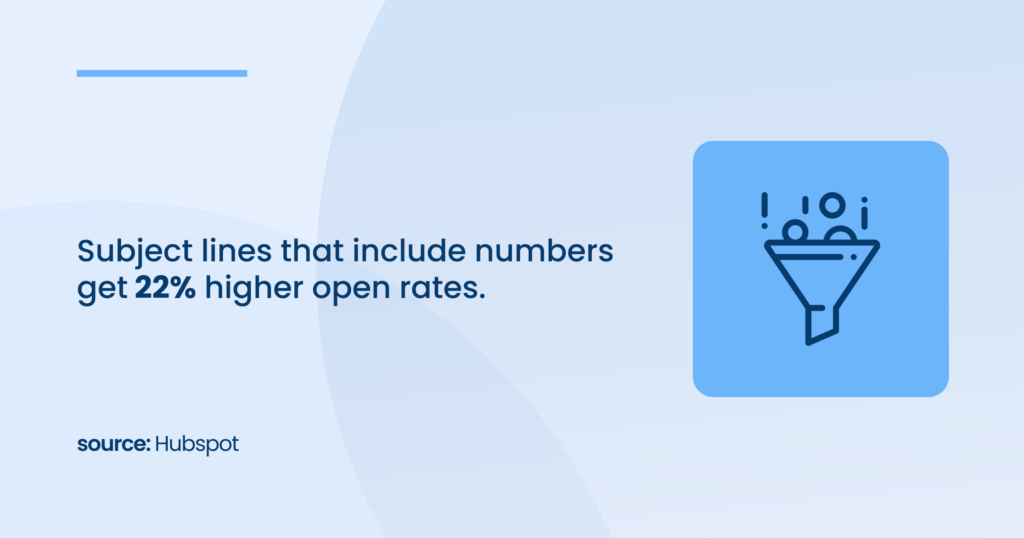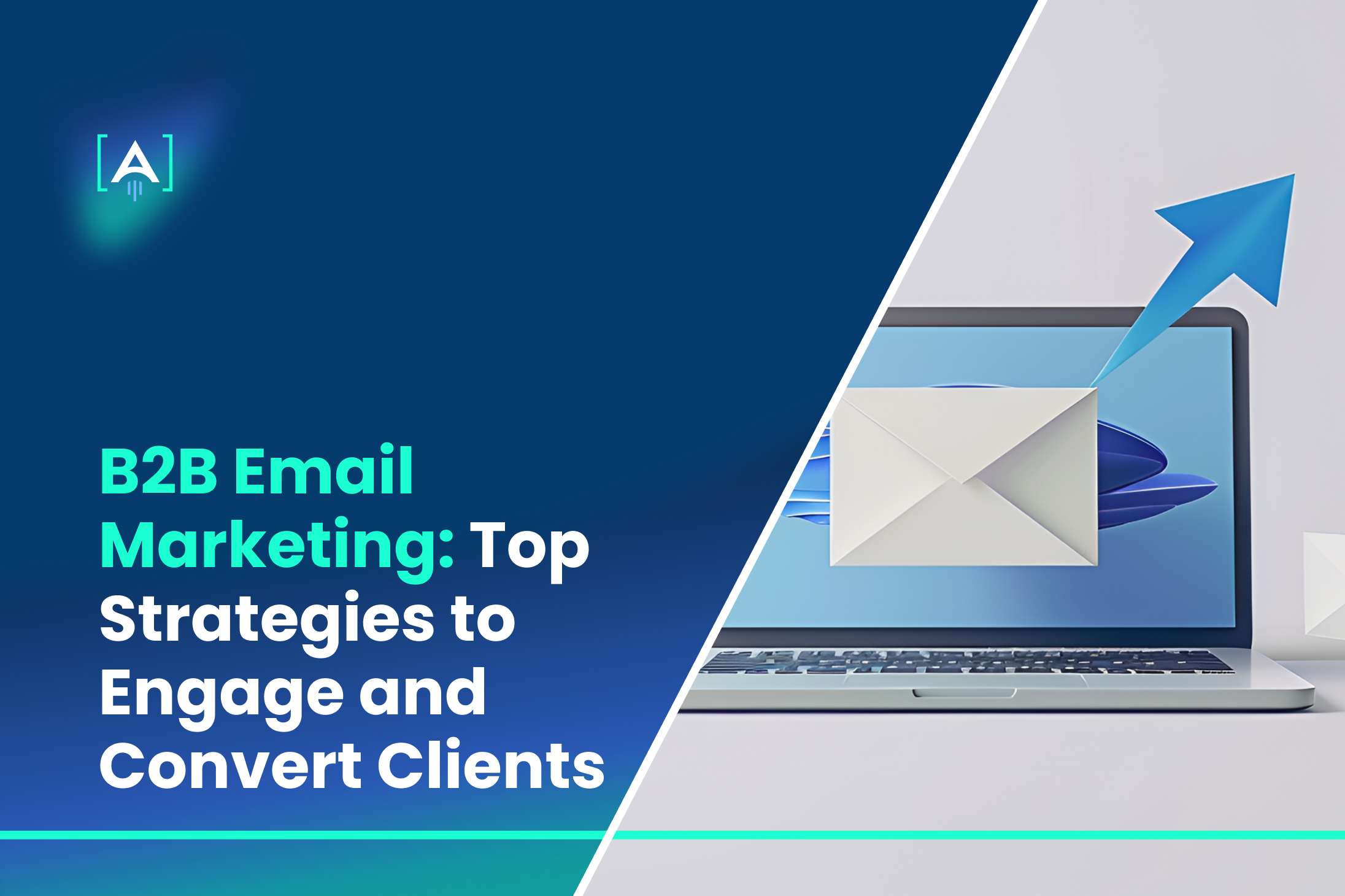Imagine a world where your emails feel like a personalized conversation, not just a mass message.
B2B email marketing, when done right, can be a powerful tool for building relationships and driving conversions.
But here’s the kicker: the number of email users is expected to grow from 4.26 million in 2022 to 4.73 million by 2026.
Source: Statista
The Essential B2B Email Marketing Values are:
- Relationship Building
- Lead Generation and Conversion
- Measurable ROI and Analytics.
So, how do you cut through the noise and make your emails truly memorable? Definitely an Email Marketing Agency could assist you standing out in the inbox easily.
Let’s dig into the top strategies that will help you build lasting connections and drive real results.
Crafting Emails that Speak to CEOs: The Art of C-Suite Communication
When you’re communicating with CEOs and business owners through B2B email marketing, you’re not just sending messages—you’re creating a direct line to decision-makers who have very specific priorities and challenges.
Writing an email that truly resonates with a CEO requires a deep understanding of their mindset, pain points, and objectives.
What’s on their mind?
CEOs are primarily focused on:
- Growth: How can their company scale efficiently and sustainably?
- Profitability: What strategies will drive revenue while controlling costs?
- Innovation: What tools, like AI email marketing, can give them a competitive edge?
- Risk management: How can they minimize risks, especially in areas like cybersecurity, compliance, or even email deliverability?
Knowing this helps you create emails that don’t just push products but address these high-level priorities.
Your email should demonstrate how your solution fits into the big picture.

The subject line is your gateway.
1. The Art of First Impressions: Subject Lines That CEOs Can’t Ignore
It’s like the headline of a newspaper—if it’s not compelling enough, it’ll be skipped.
CEOs make snap decisions, often glancing through dozens of emails in seconds. Your subject line needs to spark curiosity, create urgency, or offer immediate value.
1. Brevity is Power
CEOs don’t have time to sift through long, confusing subject lines. Keep it short and snappy. Research shows that subject lines with 6-10 words perform best in B2B email marketing. A concise message cuts through the clutter and tells the reader exactly what they can expect.
Example:
- “Boost Your ROI by 30% with AI-Powered Email“
- “Cut Marketing Costs by 20% – Here’s How“
In these examples, the value is clear, and the subject lines are quick to digest. You are speaking directly to the CEO’s goal of improving efficiency and increasing ROI.
2. Relevance is Key
Your subject line should reflect the email customer journey the CEO is on. Are they just discovering your product, or are they further down the funnel, comparing options? Tailor your subject line to match where they are, delivering what’s most relevant to them at that point in time.
- For discovery: “Is Your Email Marketing Reaching the Right Clients?“
- For decision-making: “The AI Tool Trusted by CEOs to Drive Email Results“
The subject line should answer an immediate need or solve a problem that is top of mind for them.

Personalized email subject lines that align with their pain points perform better because they feel directly relevant to their current challenges.
3. Urgency Drives Action
Adding a sense of urgency to your subject lines is a proven psychological trigger.
Urgency sparks immediate action because people don’t want to miss out on something important or time-sensitive. In email marketing for B2B, this tactic is especially powerful when combined with a tangible benefit.
Example:
- “Increase Open Rates by 25% This Month – Try It Now“
- “Last Chance to Improve Your Email Campaigns with AI Insights“
By tapping into urgency, you’re subtly nudging the CEO to prioritize your email over others. Urgency helps move your email to the top of their busy to-do list.
4. Numbers and Data Get Attention
CEOs are numbers-driven. They are constantly looking for measurable results, whether it’s improving efficiency, reducing costs, or scaling their business.
Subject lines that include numbers—especially those that highlight key stats or potential ROI—capture attention quickly.

It’s a simple yet effective way to show immediate value.
Example:
- “Achieve 35% Higher Engagement with Personalized Email Campaigns“
- “Here’s How AI Can Improve Your Open Rates by 30%”
5. Curiosity Piques Interest
Humans are naturally curious, and curiosity-driven subject lines can be an excellent tool to create intrigue, especially with CEOs who are always looking for a competitive edge. You can ask a question, pose a challenge, or hint at a solution to a problem they may not even know they have.
Example:
- “Are You Missing Out on 20% More Leads?”
- “The Secret to CEO-Level Email Success Revealed“
These subject lines generate curiosity without being overly promotional. They prompt the reader to open the email to satisfy their need to know what’s inside.
6. Make It Personal
Personalization goes beyond adding a name to the subject line. It’s about crafting subject lines that address specific needs or industries.
If you know what sector a CEO works in or what challenges their company faces, use that information to make the subject line feel like it was written specifically for them.
Example:
- “John, Here’s How AI Email Marketing Can Double Your Results“
- “For Tech CEOs: Streamline Your Campaigns with Predictive Analytics“
By speaking directly to their industry or role, you increase the likelihood that the email will feel relevant and worth opening. The more personalized your email, the more trust and engagement you’ll build.
2. Content That Converts: Speaking the Language of Leaders
In B2B email marketing, you’re not just communicating with an audience—you’re speaking directly to leaders who have high-level goals, challenges, and pain points. CEOs and business owners are laser-focused on strategy, growth, and profitability.
If you want your email content to resonate with them, it needs to do more than just inform; it must inspire them to take action. To achieve this, your content must reflect their interests, address their specific pain points, and offer practical solutions.
1. Start with the CEO’s Priorities
CEOs are looking for ways to improve their business. When crafting email campaigns for them, you need to address their top concerns head-on․
- Profitability: How will your solution increase their bottom line?
- Efficiency: Can your product or service save them time or resources?
- Scalability: Is this something that will grow with their business?
CEOs don’t have time to sift through the fluff.
They need content that immediately connects with their business objectives. Instead of focusing on features, focus on outcomes. Your content should answer the question: How will this improve their business?
2. Offer Data-Driven Insights
CEOs are decision-makers who rely on data to inform their actions. They want to see proof that your solution works, not just hear promises. That’s why ecommerce email marketing or cold email marketing needs to be paired with hard numbers and case studies that show measurable results.
Stat Alert: According to McKinsey, data-driven companies are 23 times more likely to acquire customers than those who don’t leverage data effectively.
Incorporate statistics and tangible outcomes into your content to back up your claims. Instead of just saying your email marketing strategy can increase conversion rates, provide the numbers:
Example:
“Companies using our B2B email solutions have seen an average of 25% higher open rates and a 20% boost in lead conversions within the first quarter.”
By using real data, you demonstrate credibility, and that’s what drives action in CEOs. They want to see clear, quantifiable benefits before investing time or resources in your solution.
3. Use CEO-Friendly Language
CEOs aren’t interested in jargon or overly technical language.
They want clear, concise, and strategic communication. When writing for CEOs, always keep the language simple but impactful. Focus on outcomes, results, and benefits, and avoid diving too deep into technicalities unless absolutely necessary.
Before:
“Our platform integrates complex AI algorithms to optimize your email marketing performance through machine learning models.”
After:
“With AI-powered optimization, your email campaigns will run more efficiently, increasing engagement and driving results—all without extra work from your team.”
The second version is simpler, more direct, and focuses on the CEO’s primary interests: efficiency and results.
3. When to Hit Send: Optimizing Email Timing for B2B
When it comes to B2B email marketing, even the most well-crafted email will fall flat if it arrives in the wrong inbox at the wrong time.
CEOs and business owners are busy people, often juggling multiple priorities. If you want to maximize open rates and engagement, the timing of your emails is critical. The right timing can mean the difference between your email being opened and acted upon—or being ignored and forgotten.
Understand the CEO’s Daily Routine
Timing your emails right begins with understanding the typical day of your audience—business owners and CEOs.
Their schedules are packed, and their inboxes are overflowing. So, when is the best time to reach them?
- Mornings (6 AM – 9 AM): Many CEOs start their day early, often catching up on emails first thing in the morning. Studies show that emails sent during this window see higher open rates because people check their inboxes with fresh minds and fewer distractions. The key here is to make your email one of the first they see when they start their day.
- Late Mornings (10 AM – 12 PM): After the initial rush of meetings and tasks, late morning is another prime time when business owners tend to revisit their inboxes. This is often when they are more focused and have the mental bandwidth to engage with important content.
- Afternoons (2 PM – 4 PM): After the post-lunch energy dip, many CEOs return to their inbox to clear things before wrapping up the day. Emails sent during this period may benefit from less competition and a higher chance of engagement, especially if they are designed to provide value quickly and succinctly.
The Best Days to Send B2B Emails
In email marketing for B2B, the day of the week can significantly impact open rates and engagement.
Source: Forbes
Emails sent on Tuesdays and Thursdays have an average 15% higher open rate than Mondays and Fridays.
Timing Matters in Cold Email Marketing
Cold email marketing requires even more attention to timing since you’re trying to make a first impression. For cold outreach, sending emails at optimal times can significantly improve the chances of engagement.
- Best Times for Cold Emails: Early morning (7 AM to 9 AM) or late morning (10 AM to 12 PM) are typically the best windows. Decision-makers tend to tackle emails at the start of their day, and your cold email will stand a better chance of being noticed when they’re fresh.
- Follow-up Timing: Timing doesn’t stop at the first email. For cold email marketing, timely follow-ups are essential. Wait about 2-3 days after the initial email before sending a polite reminder. This shows persistence without being too pushy.
Remember: It’s not just what you say—it’s when you say it.
4. How AI Can Make Your Emails Feel More Personal, Not Less: AI-Driven Personalization at Scale
Personalization is the key to standing out.
Business owners and CEOs receive hundreds of emails daily, but very few feel truly relevant to their specific needs. This is where AI-driven personalization can make a significant impact, enabling you to automate personalized emails at scale while keeping them genuine and valuable.
Source: McKinsey & Company Research
AI is a game-changer for email marketing for B2B because it allows businesses to deliver highly personalized content to a large audience.
But it’s not just about automating tasks—it’s about using data and insights to predict needs and send the right message at the right time.
Scaling Personalization Without Losing the Personal Touch
Traditionally, personalized email meant customizing emails one at a time—impossible to scale. AI changes the game by allowing you to send thousands of personalized emails that feel uniquely crafted for each recipient.
How AI scales Personalization:
- Creating Email Campaigns Automatically: AI can help generate content for emails based on the recipient’s engagement with your brand. For example, if a business leader regularly interacts with content about cold email marketing, AI will automatically prioritize that topic in future campaigns.
- Automating Follow-Ups: AI tracks each CEO’s email customer journey and sends personalized follow-ups based on their position in the sales funnel. Did they open the email but not click? AI will send them a reminder or offer further information to nudge them toward conversion.
5. Measuring Success in B2B Email Campaigns
Measuring success goes far beyond just sending emails and hoping for the best.
For business owners and CEOs, the effectiveness of an email campaign is all about return on investment (ROI) and its impact on overall business growth. They want to see concrete results, not just vanity email marketing metrics.
Source: Mailmodo
So, which email marketing KPIs should you focus on to demonstrate real value?
1. Open Rate: Your First Sign of Engagement
The open rate is one of the simplest but most telling KPIs in email marketing for B2B. It shows the percentage of recipients who opened your email out of the total number of emails delivered.
For CEOs and business owners, this metric gives an early indication of how well your subject lines are performing and whether your email is landing in the right inbox at the right time.
But it’s important to remember that an open rate, while useful, is just the start of the story. A high open rate means your personalized email is intriguing enough to catch their attention, but it’s what happens next that counts.
2. Click-Through Rate (CTR): Action-Oriented Engagement
Once you get them to open your email, the next goal is to get them to act. This is where the click-through rate (CTR) comes in. The CTR measures the percentage of people who clicked on a link in your email.
For business owners, this is a crucial indicator of whether the content in your email is engaging enough to drive action.
A high CTR means your email marketing ideas are resonating with recipients, prompting them to explore further. Low CTR? It’s a sign that you may need to revisit your call-to-action (CTA) or the relevance of your content to the audience’s needs.
3. Conversion Rate: The Bottom Line
CEOs care about one thing above all: results. The conversion rate is the KPI that ties directly to business impact. It measures the percentage of email recipients who not only clicked on a link but also completed a desired action—whether it’s filling out a form, downloading a resource, or making a purchase.
For business owners, the conversion rate shows the true Email marketing ROI. It’s proof that your campaigns are driving real results and contributing to business growth. A low conversion rate suggests that while your email content might be engaging, the follow-through is falling short—perhaps the landing page isn’t optimized, or the offer isn’t compelling enough.
4. Bounce Rate: Monitor Your Email Health
The bounce rate measures how many emails didn’t get delivered to the recipient’s inbox. There are two types: soft bounces (temporary delivery issues, such as a full inbox) and hard bounces (permanent issues, like an invalid email address).
CEOs want to know that their email lists are clean and up-to-date because a high bounce rate can harm email deliverability and reduce the effectiveness of future campaigns.
A high bounce rate also signals potential problems with your list-building processes. By monitoring this KPI, you can keep your campaigns efficient and ensure that you’re reaching the right people.
Key Takeaways from B2B Email Marketing Strategies
- Personalization is Essential
- Personalized emails stand out in crowded inboxes, especially for CEOs and business leaders. AI-driven tools make scaling personalization more effective, helping target specific pain points and business goals.
- Subject Lines are Your First Impression
- Craft subject lines that are concise, relevant, and urgent to grab attention. Focus on addressing a specific problem or offering immediate value to decision-makers. Research shows subject lines with 6-10 words perform best, making brevity critical.
- Timing Impacts Engagement
- Sending emails at the right time maximizes open rates and engagement. Early mornings and late mornings on Tuesdays and Thursdays are the most effective windows for B2B emails. Tailoring email timing to CEOs’ schedules ensures higher engagement.
- Data-Driven Insights Drive Action
- CEOs respond to numbers and measurable results. Incorporating statistics, case studies, and clear data into your emails boosts credibility and helps decision-makers understand the tangible benefits of your solution.
- AI Enhances Personalization at Scale
- AI can automate personalized follow-ups, tailor content based on behavior, and predict the best messaging for each recipient. This ensures your emails are relevant and valuable without losing the personal touch. AI improves engagement and drives conversions more efficiently.
- Monitor Key Email Marketing Metrics
- Tracking KPIs like open rates, click-through rates (CTR), conversion rates, and ROI helps refine your email strategy. High CTRs show engagement with content, while conversion rates reflect the effectiveness of your call-to-action. Monitoring these metrics ensures continuous improvement and maximized ROI.
Final Thoughts: Strategies That Lead to Action
The power of personalized connections remains unmatched.
By implementing these strategies outlined in this article, you can transform your B2B email marketing efforts into a powerful tool for building relationships, driving engagement, and ultimately converting clients.
Remember, every email is an opportunity to connect and create lasting value.
[A] Growth Agency will be your driving force. We are a team of data-driven growth marketers focused on delivering scalable results.
Excellence is our standard. We cultivate a team of ‘A players’ – top-tier talents who bring passion and expertise to every challenge.
Ready to elevate your email marketing? Let’s build a strategy that not only engages but converts.
Together, we’ll turn your goals into reality.

